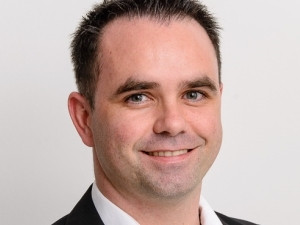Johannesburg, 27 Jan 2016

South African organisations are becoming increasingly security conscious, with a growing focus on advanced access control and the right access control technologies for particular use cases, says Nicolas Garcia, sales manager at Morpho South Africa.
Garcia says, depending on the industry sector they operate in, South African organisations are going to greater lengths to lock down physical assets, or to protect data and improve compliance.
"We're seeing growing demand from organisations across verticals to protect their investments using solutions appropriate to the use cases. Fingerprint scanners are still the most widely accepted biometric access control technology, but facial recognition is also becoming increasingly popular. In some high-traffic environments, there is also a growing case for the new MorphoWave http://www.morpho.com/en/biometric-terminals/access-control-terminals/touchless-terminals/morphowave-tower - a contactless fingerprint scanner that does not slow down traffic or raise hygiene concerns. In all solutions, high levels of reliability and performance are crucial."
Garcia says in environments where data is the lifeblood of the organisation, companies are investing more in advanced and integrated access control systems that not only control access to physical environments, but also authorise logins to enterprise systems based on where users are, or their behaviour prior to the login attempt.
"Many organisations are seeking to gain logical access control and set advanced access policies that enforce governance and compliance and support audit. For example, they might deny a user access to the system if they did not present their fingerprint at the entrance to the building. Or they might prevent the user from exiting the building if they have not logged off on their PC."
The mobile biometric reader is another technology taking hold in many sectors, says Garcia. "Organisations with remote and rural sites require mobile-based identification tools for security and access control. Our biometric MorphoTablets, http://www.morpho.com/en/public-security/check-id/mobile-devices/morphotablet which capture biometric data and verify identity, are increasingly in use in environments such as field work, remote mines and elections."
An important trend in the security and access control sector is the growing realisation that there is no one-size-fits-all solution and that all solutions are not equal, he notes. A large, data-focused firm might look to access control systems incorporating fingerprint scanners, turnstiles, CCTV and integrated, intelligent controls across the premises and the network; while smaller organisations might be effectively secured with a single MorphoAccess SIGMA Lite http://www.morpho.com/en/biometric-terminals/access-control-terminals/fingerprint-terminals/morphoaccess-sigma-lite-series biometric access terminal with integrated media and messaging platform and video and audio IP intercom capabilities.
"Customers are reviewing the available solutions thoroughly, and spending carefully to ensure they get the best solution for their environment, delivering the highest possible levels of reliability and performance. Solutions that fail to register or that break down will cost the company in terms of risk, time and maintenance. How well solutions integrate with other enterprise systems is also an important factor in their buying decisions now," says Garcia.
Share